Brief History of Konigsberg/Kaliningrad
Foundation of Konigsberg
In 1255, a castle named Konigsberg (“King’s Mountain”) was founded on a hill on the high right bank in the lower reaches of the Pregolya River at the site of the Prussian settlement of Twangste (“Oak Forest”). The founders of the castle were the knights of the Grand Master of the Teutonic Order Poppo von Ostern and the Czech king Przemysl Ottokar II, whose troops came to the aid of the knights, who suffered defeats from the local pagan population. The knights, in turn, were invited to Prussia by the Polish king to fight the pagans and to Christianize these lands.
In subsequent years, German colonists began to arrive in the conquered lands. They mixed with the local Prussian population, who later forgot their language and culture and almost completely assimilated. In the 16th century, in Konigsberg, the Prussians still accounted for about 20% of the population. A settlement appeared at the castle walls, which also began to be called Konigsberg. In 1333, the Konigsberg Cathedral was mentioned for the first time. It is located in the city center, on the island of Kant (Kneiphof).
After the Thirteen Years’ War (the War of the Cities) of 1454-1466, the Teutonic Order became a Polish vassal and moved its capital to Konigsberg from Marienburg (Malbork in Poland). In 1525, the Grand Master of the Teutonic Order Albrecht transformed the theocratic state into the secular Prussian Duchy, subject to Poland, and he himself became a duke.
The favorable geographical position of Konigsberg, the ice-free Baltic Sea, the abundance of rivers and lakes contributed to the development of shipping. In 1544, the Koenigsberg University was opened. Since 1554, the town developed according to the urban development plan becoming a large industrial and cultural center.
More Historical Facts…
Konigsberg in the 18th - early 20th centuries
In 1724, three towns, numerous villages, and suburbs located near the castle, as well as the castle, which had a special status of government residence, were united in the town of Konigsberg. In the same year, Immanuel Kant (1724-1804) was born here - the most famous native of Konigsberg in its history.
In 1758, during The Seven Years’ War, Russian troops entered Konigsberg. The residents of the town swore allegiance to Empress Elizabeth of the Russian Empire. Until 1762, Konigsberg belonged to Russia and was the center of the general-governorate of East Prussia. The town was returned to Prussia under the terms of the St. Petersburg peace treaty concluded with it by the Russian emperor Peter III. In 1776, the famous writer Ernst Theodor Amadeus Hoffmann (1776-1822) was born in Konigsberg.
During the 19th century, the reconstruction of the defensive structures of the city was carried out. A lot of bastions, ravelins, defensive ramparts were built. Most of them have survived to this day. The city gates constructed in the neo-Gothic style are of particular interest. In the 19th century, Konigsberg grew significantly. In 1782, there were 31,368 residents here. In 1888, the population of the city was 140,909 people.
In 1910, the population of Konigsberg was about 249,600 people. Koenigsberg was important as a seaport and a major railway junction. It was a key point on trade routes leading from the Russian Empire to the west. Before the First World War, Koenigsberg became a place of international trade between the East (Russia) and the West. It was especially significant in the grain and forest trade.
In 1919, Devau Airport was opened - the first airport in Germany and one of the first airports in Europe and the world.
Koenigsberg turned into the Soviet city of Kaliningrad
In August 1944, during the Second World War, the historic center of Konigsberg suffered severe damage during the air raids carried by British bombers. Later, the city was stormed by Soviet troops.
By the decision of the Potsdam Conference (July 17 - August 2, 1945), the northern part of the German province of East Prussia, together with its capital - Konigsberg - was to be given to the Soviet Union. Later, when signing the border treaties, the Konigsberg region was fully recognized as the possession of the USSR.
After the war, only about 20,000 out of 370,000 German residents remained in the city. By 1947, almost all of them were evicted to Germany. Soviet citizens were relocated to the city. July 4, 1946, after the death of Mikhail Ivanovich Kalinin, a Bolshevik revolutionary and a Soviet politician, Konigsberg and Konigsberg Oblast were renamed to Kaliningrad and Kaliningrad Oblast in his honor.
Kaliningrad Oblast became the western outpost of the Soviet Union. Due to its important strategic position and the large concentration of troops, Kaliningrad was closed to foreign citizens. In the postwar years, special attention was paid to the restoration of production, the preservation of historical and cultural values was of secondary importance, and often completely ignored.
After the war, excavations were occasionally carried out on the site of the ruins of the Konigsberg Castle. The old city was not restored. The damaged castle was demolished in the late 1960s, despite the protests of architects, historians, and other residents of the city. The demolition of the ruins and a significant part of the surviving buildings continued until the mid-1970s, which caused irreparable damage to the architectural appearance of the city.
Kaliningrad in today’s Russia
The collapse of the USSR was the beginning of a new stage in the development of Kaliningrad and Kaliningrad Oblast. The region became isolated from the main territory of Russia.
In 1991, Kalningrad became open for international cooperation with other countries, primarily with Germany and Poland, in the fields of business, culture, and education. The question of returning the original name was raised several times, which however didn’t lead to anything.
In 2018, the Kaliningrad Arena stadium with a capacity of 35 thousand seats was built. Four matches of FIFA World Cup 2018 were played in Kaliningrad.
Today, according to various ratings, Kaliningrad is one of the best cities in Russia for both living and doing business.
Streets of Kaliningrad
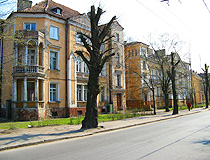
Kaliningrad street view
Author: Tylyguzov Sergey
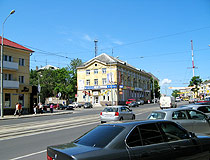
Kaliningrad city view
Author: Tylyguzov Sergey
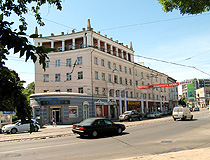
Kaliningrad scenery
Author: Tylyguzov Sergey
Kaliningrad - Features
The city of Kaliningrad, located about 1,250 km west of Moscow, is the administrative center of the westernmost region of Russia, the only region of the Russian Federation, which is completely separated from the rest of the country by hundreds of kilometers, land borders of two states (Poland, Lithuania), and international sea waters.
Pskov, the nearest regional center of Russia, is 800 km away. At the same time, the distances to a lot of European capitals are relatively small: 350 km to Warsaw and Vilnius, 390 km to Riga, 550 km to Minsk, 600 km to Berlin, 650 km to Stockholm, 680 km to Copenhagen.
Kaliningrad stands on both banks of the Pregolya River, not far from the Kaliningrad Bay located in the southeastern Baltic Sea. This is the largest city in the North-West Federal District of Russia after St. Petersburg, the third largest city (after Riga and Vilnius) in the Baltic states.
The climate of the city is transitional from maritime to continental. Thanks to the influence of the Gulf Stream, winters are warmer than in the mainland of Eurasia. Due to its proximity to the Atlantic Ocean, summer in Kaliningrad is moderately cool and begins, on average, on June 11. The average temperature in January is minus 1.5 degrees Celsius, in July - plus 18.1 degrees Celsius.
Kaliningrad is the most important transport hub in the region because it is the only non-freezing Russian port in the Baltic Sea. Khrabrovo International Airport offers regular flights to Moscow, St. Petersburg, Riga, Minsk, Warsaw. Regular bus routes connect Kaliningrad with Belarus, Ukraine, Lithuania, Latvia, Estonia, Poland, the Czech Republic, and Germany.
The Pregolya River divides Kaliningrad into four parts. There are eight bridges across it. Seven bridges existed in Konigsberg in the 16th - 20th centuries. The mutual arrangement of these bridges prompted mathematician Leonhard Euler to think about it, which led to the emergence of graph theory. The mathematical problem known as the Seven Bridges of Konigsberg is also related to these bridges.
Tourism is one of the priorities for the development of the city. Most of the cultural and historical sites, museums, architectural monuments, and entertainment complexes of Kaliningrad Oblast are located here. In total, there are 536 cultural heritage sites. In Kaliningrad, you can also find a unique phenomenon for Russia - Orthodox churches located in old German churches.
Among foreign tourists visiting Kaliningrad Oblast, tourists from Germany make up the bulk, which is approximately equal to the combined presence of all tourists from other countries. In Kaliningrad, there are more than 100 hotels of various categories. Kaliningrad hotels are among the best in Russia.
With rare exceptions, almost no pre-war buildings have been preserved in the city center. The surviving German buildings are located closer to the outskirts. In the last third of the 20th century, the attitude towards German architecture began to change, some of the German buildings that had been preserved until that time were restored.
Main Attractions of Kaliningrad
The Curonian Spit National Park - a narrow and long sandy strip of land separating the Curonian Lagoon from the Baltic Sea and located north of Kaliningrad. The name of the spit comes from the name of the Curonian tribes, who lived here before the Germans colonized Prussia. The length of the spit is 98 kilometers, the width ranges from 400 meters to 3.8 kilometers. In 2000, the Curonian Spit was included in the UNESCO World Heritage List.
The Curonian Spit is a unique natural area with sand dunes, pines, picturesque sea views (unfortunately, the water is almost always cold), and clean air. Favorable climatic conditions allow people to rest here from May to November.
Due to its geographical location and orientation from north-east to south-west, the Curonian Spit serves as a corridor for migratory birds. From 10 to 20 million birds fly over the spit every spring and autumn, a significant part of them stops here to rest and feed.
The Dancing Forest - one of the most mysterious sights of the Curonian Spit. The forest is located on the 37th kilometer of the spit, near the village of Rybachy. This place got its name thanks to the unusually curved trunks of pines, as if frozen in a dance. The trunks twist, bifurcate, and even bend in rings. The most interesting fact is that these anomalous shapes of the trunks are not found everywhere in the forest, they are concentrated on only one small area.
The Museum of the World Ocean - the first complex marine museum in Russia. Here you can find expositions devoted to shipping, marine life, geology and hydrology of the oceans. You can also visit the following museum ships: “Vityaz” (a Soviet research vessel), “Cosmonaut Viktor Patsaev” (one of the vessels of the Space Research Service of the Academy of Sciences of the USSR), the submarine B-413. Naberezhnaya Petra Velikogo, 1.
The Konigsberg Cathedral (1333-1380) - an inactive church located in the historic center of the city - Kneiphof (Immanuel Kant Island). Before the beginning of the Reformation of the 16th century, it was the main Catholic church in Konigsberg.
This cathedral, built in the style of brick (Baltic) Gothic architecture, is one of the few Gothic buildings in Russia and one of the symbols of Kaliningrad. Today, the building is used to house museum exhibits and hold concerts. There are evangelical and orthodox chapels. Immanuel Kant was buried in the “professorial tomb” of the cathedral in 1804 and became the last person buried in it. Kanta Street, 1.
The Kaliningrad Zoo - one of the largest and oldest zoos in Russia. It was founded by German entrepreneur Herman Klaass in 1896. The area of the zoo is 16.5 hectares. Here you can see about 350 animal species, as well as animal sculptures. The Kaliningrad Zoo is also an arboretum. In addition, the zoo has several pre-war buildings and a fountain. Mira Avenue, 26.
Rybnaya Derevnya (The Fishing Village) - a historical-ethnographic and trade-craft complex in the form of a city block built up with modern buildings in the architectural style of the pre-war Konigsberg. Oktyabrskaya Street, 6?.
Kaliningrad Amber Museum. Not far from the city, in the village of Yantarny, there is the largest amber deposit in the world - more than 90% of the proven world’s reserves. The museum exposition is housed in 28 halls with a total area of more than one thousand square meters. The museum exhibits unique pieces of amber (an amber nugget weighing 4.28 kg is the largest in the museum’s collection), as well as more than two thousand pieces of art made of amber. Marshala Vasilevskogo Square, 1.
Amalienau - one of the districts of the former Konigsberg formed around a noble estate. At the beginning of the 20th century, it was located outside the city limits. Famous Prussian architects designed most of the buildings (villas) located here.
The Church of the Holy Family (1904-1907) - the most significant creation of Friedrich Heitmann, one of the most famous architects of East Prussia. A lot of elements of the building, its layout were taken from the Teutonic Order churches. Today, this building is used as a concert hall of the Kaliningrad Regional Philharmonic. Bogdana Khmelnitskogo Street, 63?.
The Holy Cross Cathedral (The Kreuzkirche) (1930-1933) - an Orthodox church in the building of the former Lutheran Evangelical church. The original style of this building can be defined as Art Nouveau with an admixture of Neoclassicism and Gothic. In 1986, the church was transferred to the local Orthodox community. Generala Pavlova Street, 2.
The Bunker Museum. The exposition of this museum, which occupies the former German bomb shelter, is mostly devoted to the assault on Konigsberg, which took place one month before the end of the war. The bunker with 21 rooms lies at a depth of 7 meters, its length is 42 meters, its width - 15 meters. Guided tours are conducted in Russian and German. Universitetskaya Street, 2.
Kaliningrad Regional Museum of History and Arts. The main branch of this museum occupies a building constructed in 1912, which is located in the central part of Kaliningrad. Tourists can visit five thematic halls: the history of the region, archeology, nature, war, and “The Horizons of Memory”. Each hall contains collections devoted to the history and culture of the region from the ancient period to current events. Klinicheskaya Street, 21.


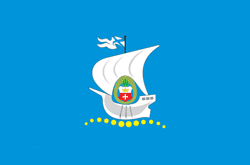
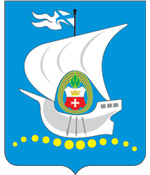
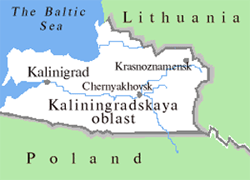



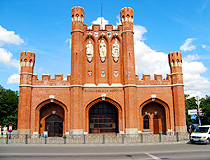
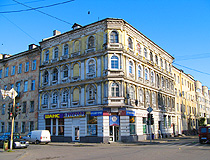
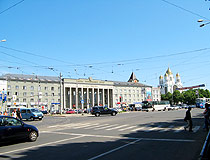
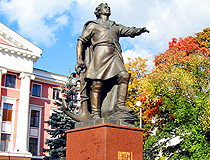
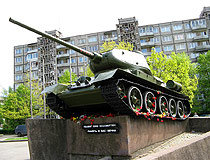
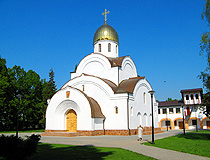
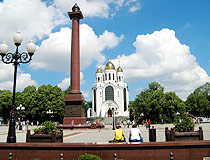
The comments of our visitors